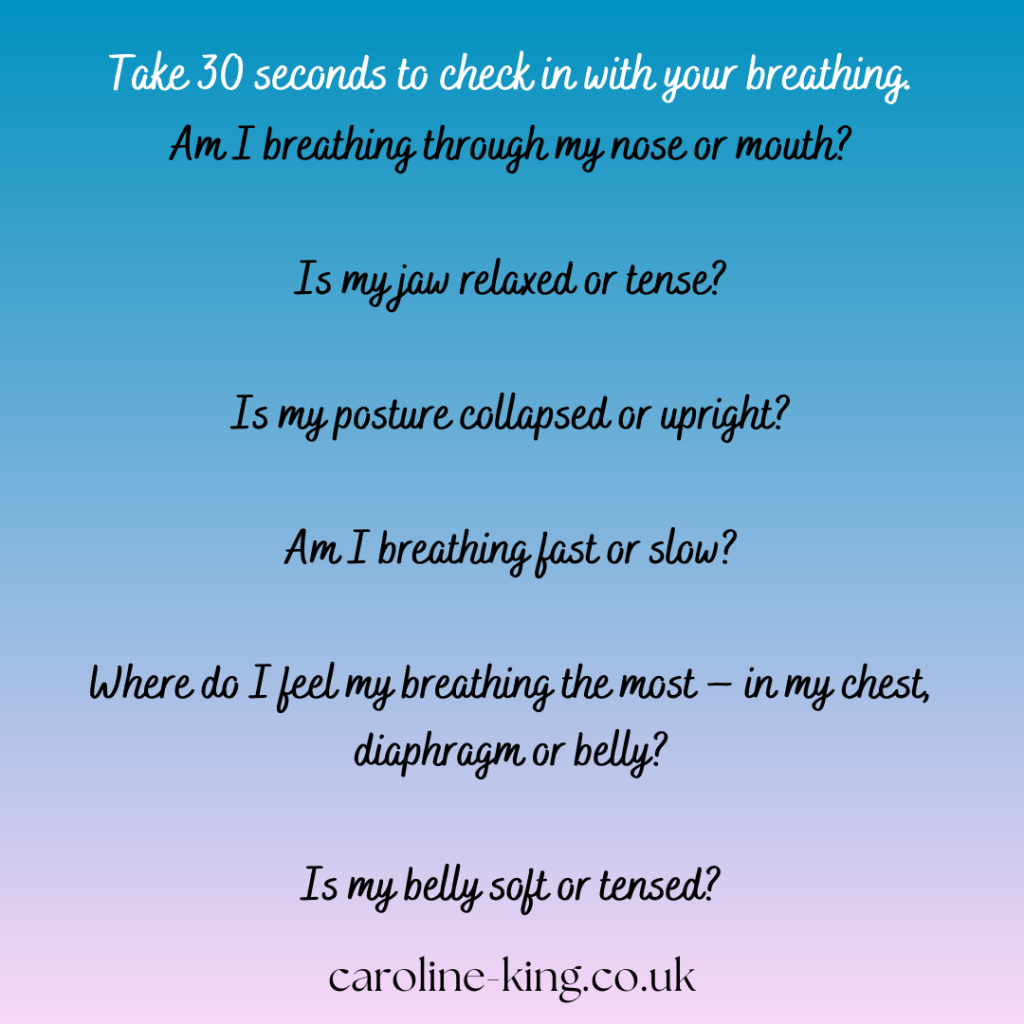
Trauma is physiological. It is a highly activated incomplete biological response (fight, flight, freeze). Anxiety signals that your nervous system is lacking safety and we constrict. This impacts our nervous system, muscles and tissues.
Constriction in the body tightens respiratory muscles and this affects the way we breathe. Such as shallow breathing into the chest, a contracted and tight thoracic diaphragm due to fear, a collapsed posture that impedes diaphragmatic breathing, frequent breath-holding, forcing the out breath, or faster breathing patterns
There are lots of different breath-work exercises to choose from, but remember that each one has a different effect on your nervous system.
Dysfunctional breathing such as over breathing can create a stress response instead of a calming response and if our system is constantly in a stress response this is not healthy for our body and mind.
So how you breathe really impacts your nervous system and knowing what you can do to regulate your nervous system state empowers you to be able to take control of your body.
In order to safely regulate your nervous system, it is important to understand and discern the correct breathwork practices that your nervous system will require at different times. Not every technique is suitable for everyone. Some breathing practices make people feel light-headed or more anxious. You don’t want to add more stress by adrenalising your nervous system when it needs more regulation and calming. Learning to listen to your body is so important.
Check in with your body:
How am I feeling right now?
What kind of breathing practice do I need right now?
4 Breath-work exercises

When you do breathing practices that lengthen your exhale, you are accentuating the relaxation response in your nervous system.
When you do breathing practices that focus on deepening your inhales, you are accentuating the activation response in your nervous system.

What this means is that slower breath-work practices, where you exhale for longer, down regulate (calm) your nervous system.
Fast breathing practices, where you inhale more, up-regulate (activate) your nervous system and this will intentionally trigger a stress response in your body.

Breathing practices through the nose, together with lengthened exhalations are very calming.
Breathing practices through the mouth, together with big inhalations are very activating.
We can support trauma healing with daily functional breathwork practices.
Create awareness of your breathing patterns by doing regular quick breath check ins anywhere and anytime. Do them especially when you feel stressed or anxious.

We can only change what we are aware of. Awareness is the first step to changing patterns that keep us stuck in trauma.
Breathing is considered to be the bridge between the conscious and the unconscious. Somatic work is teaching you to be sensationally aware of the unconscious.
Nervous system recovery, trauma integration and reprogramming the nervous system takes time.
A healthy, functional breathing pattern supports a more regulated nervous system which equals a calmer mind and a more relaxed body.
This blog is just a brief outline of body-based, polyvagal psychotherapy. If you are
looking for some more individualised guidance or someone who really understands
the mind-body connection, I would be delighted to provide confidential 1:1 sessions to overcome your trauma symptoms.
Visit www.caroline-king.co.uk
